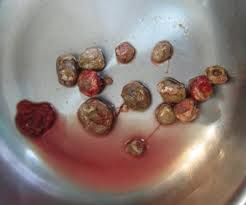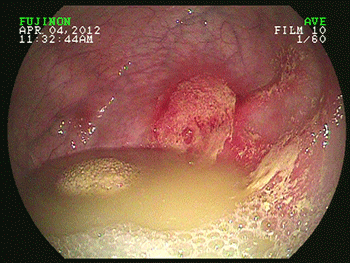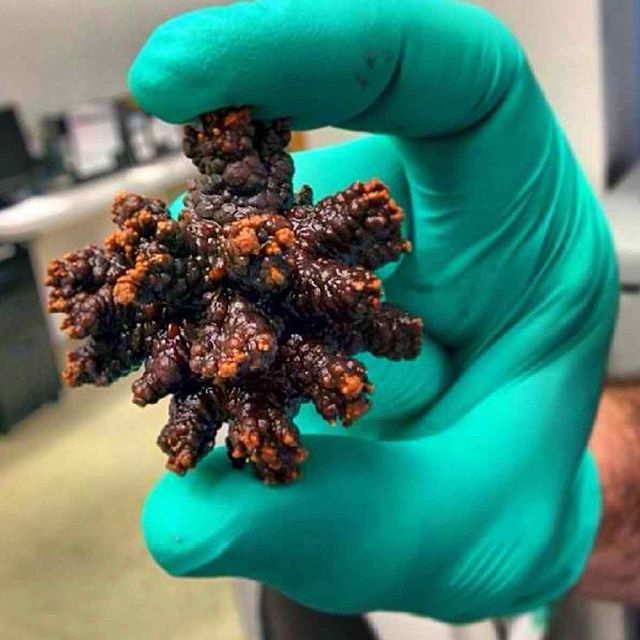Medicines for Bladder Stones (Not Drugs!)
Thank you for reading this post, don't forget to subscribe!Causes of Bladder Stones
The following conditions can contribute to bladder stones:
- An enlarged prostate gland: The prostate gland surrounds the urethra, When the prostate becomes enlarged, it will press against the urethra and interfere with normal urination.
- Weak bladder: The sides and walls of urinary bladder can become weak in certain areas. When this occurs, those weakened areas can form pouches and bulge outward, urine collects and stores in these pouches.
- Infection or inflammation: Harmful bacteria may cause inflammation and lead to a urinary tract infection (UTI). UTIs are common causes of bladder stones.
- Damaged urethra: If the urethra is damaged or injured from disease, illness, or trauma, it may become narrow because of the infection and block the flow of urine from passing.
To watch animated video Click Here
Who Is at Risk?
Approximately 95% of patients who develop bladder stones are men—specifically older men (over 50) who have previously had problems with their prostate glands.
Men in their thirties who are prone to consuming high artificial fat and high artificial sugar diets, are more porn to be effected of bladder stones.
Bladder Stones Diagnoses
To confirm diagnosis the following tests may required:
- Ultrasound
- Urinalysis (to examine urine for crystallization, abnormalities, infections and urine concentration {urine specific gravity}).
- Spiral computerized tomography scan (to checks for complications within the bladder).
- Intravenous pyelogram (The dye highlights any abnormalities found in the bladder, and an x-ray is taken of the highlighted results).
- X-ray (x-ray will show the inside of the bladder and most complications that are present. However, an x-ray may not show every stone that is present).
Homeopathic Medicine for Bladder Stones
Berberis Vulgaris and Hedeoma Pulegioides
Berberis Vulgaris is the top listed medicines for urinary tract stones. Pain in kidney that radiates down the ureter and into the urinary bladder, shooting/pulsating pains, stitching pains which are cutting or stinging in nature and with urging to urinate. The pain may worsen from motion or jarring movement. Urine may be yellow and may contain slimy sediments, kidney region is sensitive to touch, Bubbling sensation in region of kidneys. Sediments in urine, bloody urine, dark colored urine.
Pareira Brava 
Useful in renal colic, prostatic affections, and catarrh of bladder. Sensation as if bladder were distended, with pain. Pain going down thigh.
Urinae black, bloody, thick with mucus. Constant urging; great straining; pain down thighs during efforts to urinate. Can emit urine only when he goes on his knees, pressing head firmly against the floor. Feeling of the bladder being distended and neuralgic pain in the anterior crural region. (Staph.) Dribbling after micturition. (Selen.) Violent pain in glans penis. Itching along urethra; urethritis, with prostatic trouble. Inflammation of urethra; becomes almost cartilaginous.
pain from the kidney radiates down to the thigh sometimes radiate down to the feet to the glans (during urination) from the kidney region. Constant urge to urinate. Urine is passed with severe pain. Red sand and sometimes sticky mucus may be observed in the urine.
Lycopodium for kidney stone
Lycopodium Clavatum is an excellent choice when there is micturition especially nocturnal, pain worsens before urination, scanty urination, pain subsides after passing urine. Red sediments or bloody urine. In some cases, the urine may be purulent, turbid, or pale.
Foamy urine – deep colored, with yellow or reddish sediment. Sometimes clear, transparent urine, having a heavy, red, crystallized sediment. Stitches in the neck of the bladder and in the anus at the same time.
Hydrangea Arborescens
Hydrangea Arborescens is popularly known as the stone breaker. Hydrangea Arborescens is used to crush kidney stones, stones in ureter as well as bladder, acts especially on bladder neck (even prostate). A significant symptom to look out for is white deposits or yellow sand in urine.
Cantharis Vesicatoria
Retention of urine, with cramp-like pains in the bladder. Urgent and ineffectual efforts to urinate, with painful emission, drop by drop with difficulty, weak and scattered stream. Urine, pale yellow, or of a deep red colour.
Flow of sanguineous mucus from the bladder. Blood from urethra – drop by drop. Purulent urine. Burning smarting while urinating. Incisive pains in urethral opening, pain during the emission of urine, and afterwards. Sharp, tearing, and incisive pains, successive pulling and pulsations in the urinary organs.
Burning, stinging and tearing in the kidneys. Pressing pain in the kidneys, extending to the bladder; along the ureters; relieved by pressing upon the glans. Inflammation and ulceration of the kidneys, bladder, and of the urethra. Exceedingly painful sensibility of the bladder region to touch
Sarsaparilla Officinalis
The urinary organs; genitals; rectum; skin and bones; right lower extremity. In the urinary sphere there are symptoms which are very severe and also peculiar: sever pain at end of micturition, just as the urine ceases to flow; inability to urinate freely except in the standing position, when sitting it only dribbles; excessive pain in urethra which may run back into abdomen; passage of gravel like grey sand.
Many cases of renal colic and dysuria in infants with passage of sand have been cured with Sars. spermatorrhoea, with swollen cords. In the female generative sphere it has many symptoms of painful and disordered menstruation. A peculiar symptom is “moist eruption in right groin before menses.
Scanty urine passed is scanty. Urine may contain slimy or sandy particles. Sarsaparilla Officinalis is also prescribed for right-sided kidney stones.
Ocimum Can
Diminution or suppression of the urinary secretions. Urine albuminoids; strong-scented (high-colored, smelling of violets, apparently full of bile); dark brown (porter-colored) and scanty; deposits bright-red sediment. Bright’s disease.
Tabacum
Renal colic; violent pains along ureters; cold sweat; deathly nausea. Paralysis of sphincter, constant dribbling. Enuresis. Urine yellowish-red, with increased secretion. Inflammation of the orifice of the urethra.
Natural Remedies to Treat Bladder Stones
1. Pineapple Juice, Rose Water, Sugar Candy (misri)
You have likely heard of pineapple juice and rose water, but may be wondering what misri is.
The medical term misri is a sugar candy lump or type of confectionary mineral (natural sweet mineral). To reap the benefits of this remedy, mix 100 ml of pineapple juice, 10 grams (g) of sugar candy, and 100 ml of rose water together and let it sit overnight.
The next morning, it’s ready to use; One teaspoon on an empty stomach thrice a day. It will provide immediate relief to bladder stone symptoms.
2. White Goosefoot Juice
The white goosefoot plant (chenopodium). To get the best effects from it, grind 50 g of white goosefoot leaves in 125 ml of water and take one teaspoon thrice a day for two weeks. This will help dissolve the bladder stones.
3. Horse Gram, Radish Juice
The scientific term for horse gram is Macrotyloma uniflorum. It is a legume/seed and is an excellent source of iron. To get the full effects, you want to boil 6 g of horse gram and 25 ml of extracted radish juice in 125 ml water. After straining it, drink it first thing in the morning on an empty stomach. This will help break down the stones.
4. Watermelon Seed Kernels
Consuming the kernels from watermelon on a daily basis will help break down the stones so they can pass through the urine.
5. Grapes Leaves, Grapes Juice
Boil 20 g of grapes leaves in a cup of water and filter it. Then mix in 20 ml of grape juice and take it thrice a day (one teaspoon).
6. Marigold (Calendula) Petals, Sugar Candy
Also known as calendula, marigold is an herbaceous plant and can be used in salads. For the best results, combine and Misri/sugar candy in a glass of distilled water . Take one teaspoon thrice a day for a weak minimum.
7. Onion Juice
Drink 5 g or 1 ounce of onion juice on an empty stomach. The bladder stones will dissolve quicker if taken on a daily basis.
8. Puncture Wine, Horse Gram
Grind 3 g of cucumber and kernel seeds, 3 g of muskmelon kernel seeds, 4 g of horse gram, 6 g of melon kernel seeds, and 4 g of puncture wine (Tribulus Terrestris) and 4 gr of cantaloupe seeds. Boil the ingredients in 180 ml of water and add Misri to it. Take thrice a day on empty stomach.
9. Black Salt, Aluminum Chloride, Cucumber
Black salt or pink Himalayan salt condiment and aluminum chloride (Noshadar). For best results, sprinkle black salt and aluminum chloride onto cucumber slices and consume on a daily basis for one week only.
For consultation, Breast Cancer Diet and Exercise visit our clinic.
To order medicine by courier, please send your details at WhatsApp– +923119884588
 Dr. Sayyad Qaisar Ahmed (MD {Ukraine}, DHMS) ; senior research officer Dnepropetrovsk state medical academy Ukraine; is a leading Homeopathic physician practicing in Al-Haytham clinic, Umer Farooq Chowk Risalpur Sadder (0923631023, 03119884588), K.P.K, Pakistan.
Dr. Sayyad Qaisar Ahmed (MD {Ukraine}, DHMS) ; senior research officer Dnepropetrovsk state medical academy Ukraine; is a leading Homeopathic physician practicing in Al-Haytham clinic, Umer Farooq Chowk Risalpur Sadder (0923631023, 03119884588), K.P.K, Pakistan.
Find more about Dr. Sayyad Qaisar Ahmed at :
https://www.youtube.com/Dr Qaisar Ahmed
